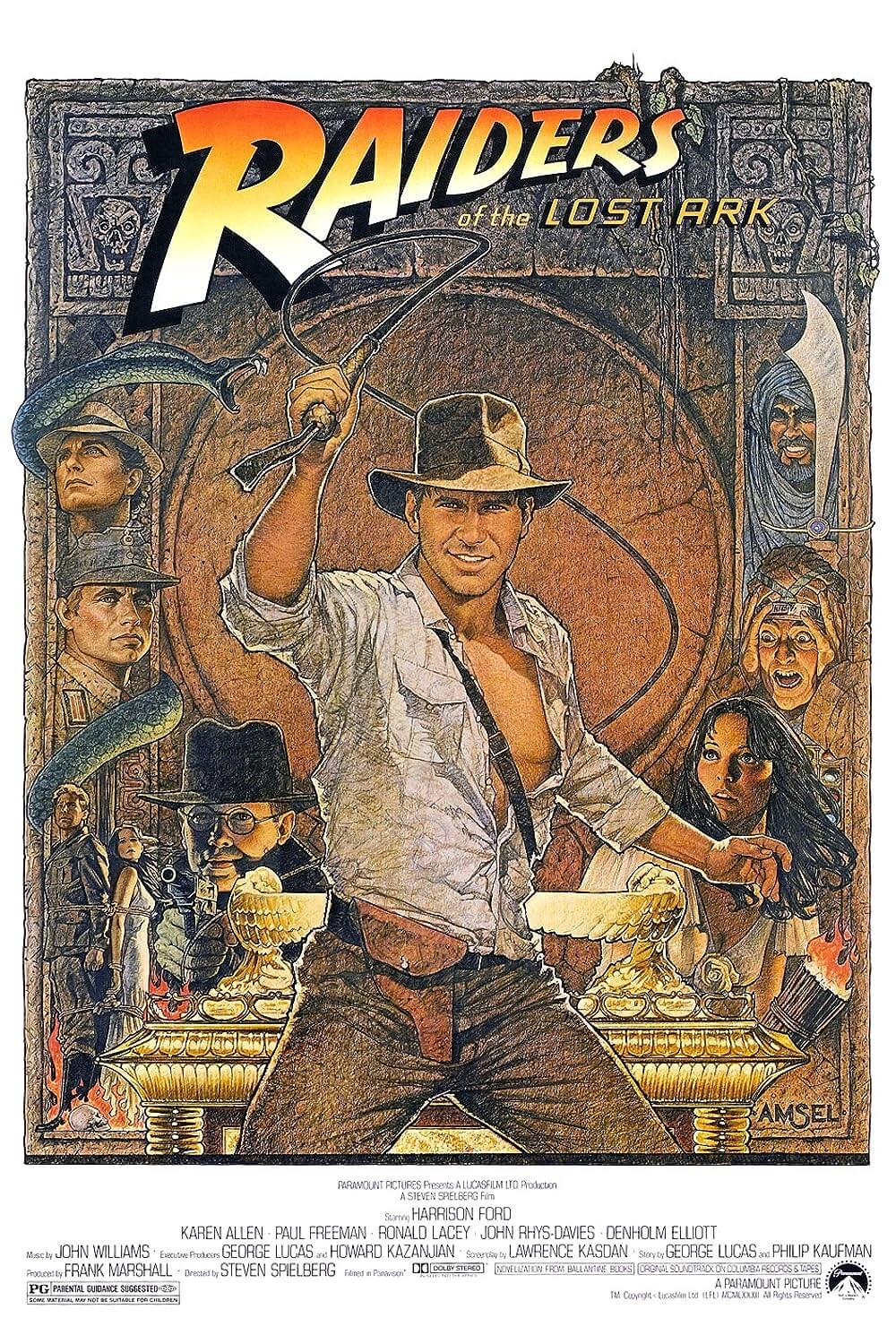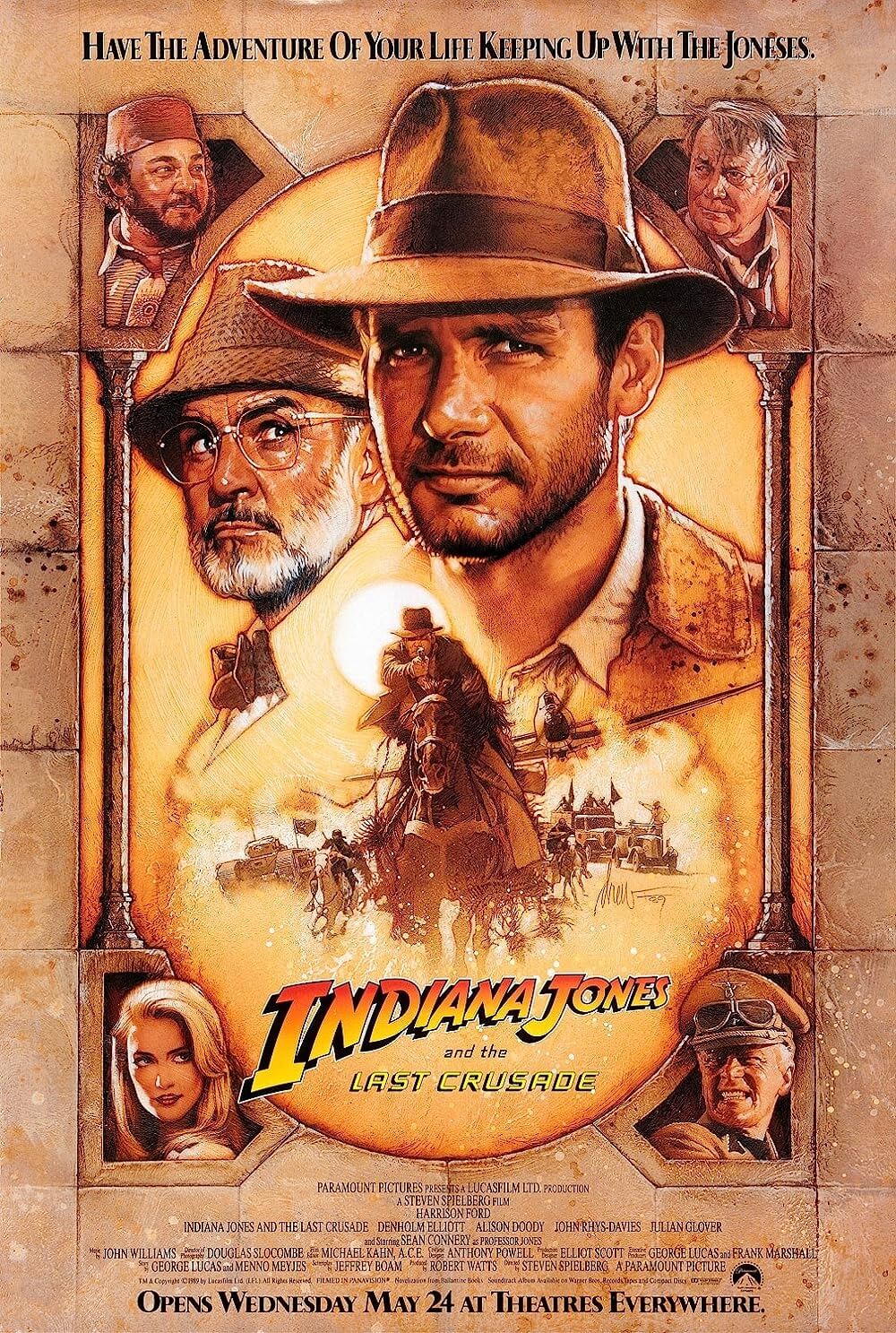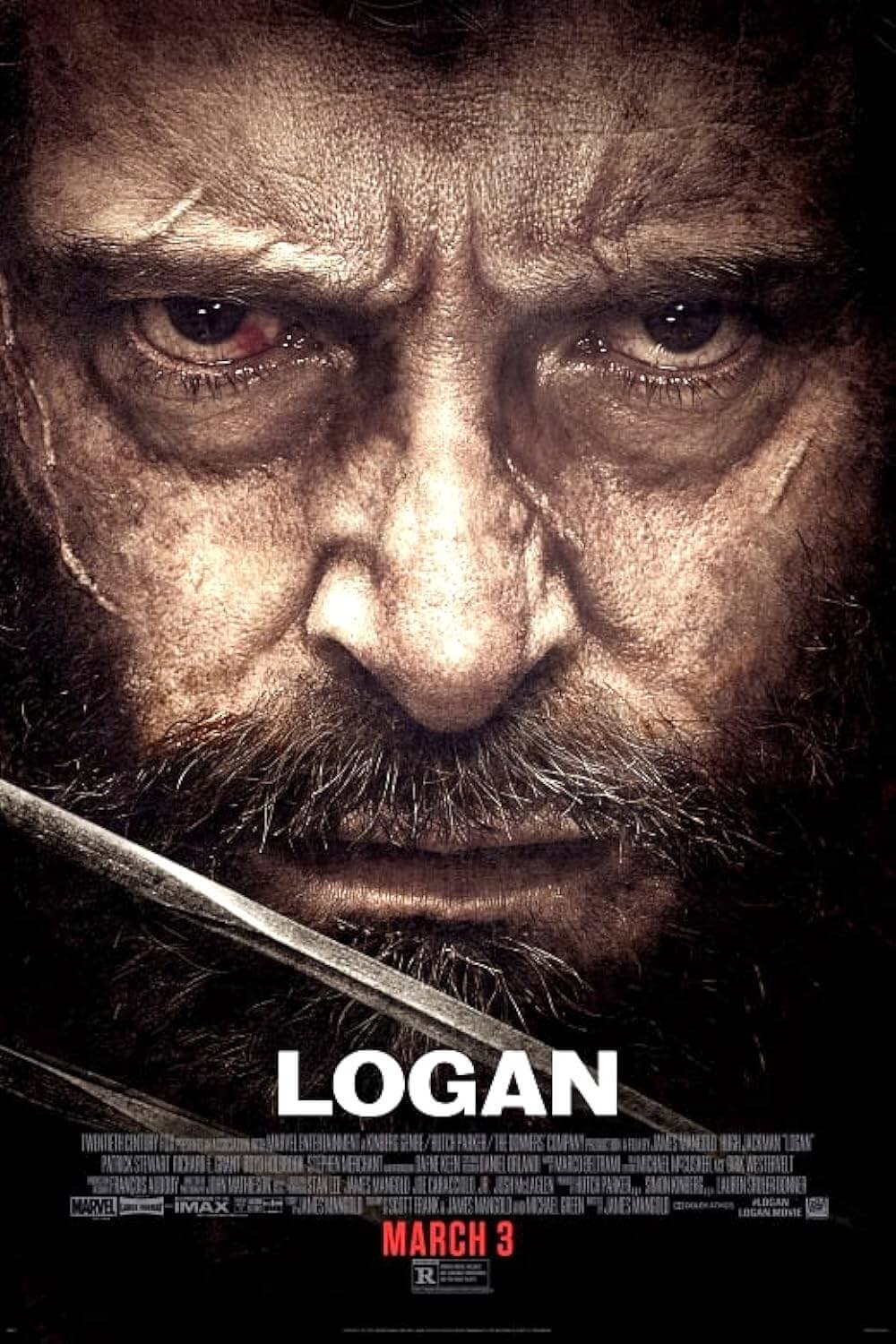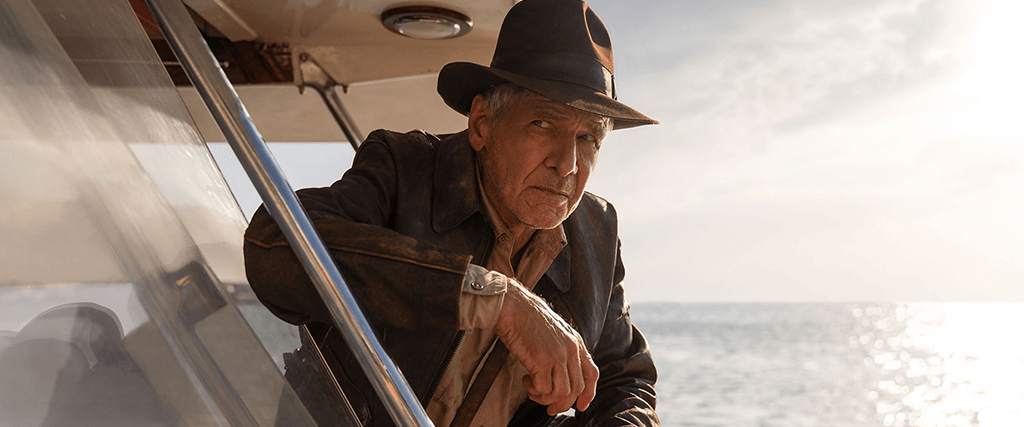
Indiana Jones and the Dial of Destiny
By Brian Eggert |
James Mangold’s Indiana Jones and the Dial of Destiny—even before finishing this thought, I must interrupt. What a strange sensation to write any other director’s name but Steven Spielberg’s before an Indiana Jones title. The distinctly Spielbergian quality of every previous installment looms large over the fifth and final adventure with Harrison Ford’s whip-cracking, Nazi-punching, treasure-seeking hero. Dial of Destiny brings back what many loved about earlier entries (unabashed antifascism, family dynamics, history melded with action, et al.) and creates a compendium of those themes for Indy’s final adventure. Fortunately, the film never overdoes its moments of nostalgia or “remember when” callbacks. Instead, it’s distinct without ever feeling hollow or like fan service, and it’s touching enough to justify its existence beyond the obvious cash-grab incentive. Driven by a compelling story and soaring performances, it’s a worthy conclusion. That Spielberg chose to step aside and serve as an executive producer on the new film, leaving capable journeyman Mangold (Walk the Line, Ford v Ferrari) in charge of directing, means it’s less of a spectacle. And even though the result lacks Spielberg’s showmanship and visuality, Mangold supplies a fitting end for a beloved character.
George Lucas originally conceived Indiana Jones as an answer to James Bond, spliced with the escapist delights of Saturday matinee adventure serials. Lucas and Philip Kaufman (Invasion of the Body Snatchers, 1978) shared story credit on Raiders of the Lost Ark (1981) for their old-fashioned archeologist who moonlights as an “obtainer of rare antiquities,” getting himself in trouble with all sorts of nasty characters—from Nazis to Occultists to Nazi Occultists—in the 1930s. With Spielberg directing, Raiders became a sensation and, for better or worse, helped usher in a new era of nostalgic adventure stories. Followed by its two initial sequels in the same decade, Indiana Jones and the Temple of Doom (1984) and Indiana Jones and the Last Crusade (1989), the film had plenty of detractors who accused the material of infantilizing its audience and perpetuating outmoded colonialist worldviews. In any case, the trilogy remained among Hollywood’s best until the arrival of Indiana Jones and the Kingdom of the Crystal Skull (2008), which appropriately resituated the story to the 1950s, where Atomic paranoia, the Red Scare, and UFOs dominated the culture and informed the movie. But after nuking the fridge in the deliriously entertaining opening sequence, the film divided many fans and critics.
Maybe that’s why Dial of Destiny has four credited screenwriters, including Jez and John-Henry Butterworth, David Koepp, and Mangold. With the octogenarian Harrison Ford unlikely to return for another adventure, everyone knew this would be Indy’s final ride. The stakes are high, and there’s pressure to get it right. The film must close out the 42-year Indiana Jones legacy on a high note and restore the franchise for those who didn’t enjoy Kingdom of the Crystal Skull. Now that’s pressure. But Mangold and his writers prove they’re up to the challenge, focusing on telling a good story, even if it doesn’t always look or feel like a traditional Indiana Jones film. For instance, the series has always taken place in a world that’s far from emotionally realistic. The heightened, escapist action usually gives way to a fantastical flourish, such as the Ark of the Covenant melting faces or Shankara stones returning life to the Indian village. There’s magic in Dial of Destiny, too, and like the best MacGuffins that set Indiana Jones’ adventures into motion, the new film blends history into fantasy in the final act. However, everything preceding that feels more grounded than a typical entry.
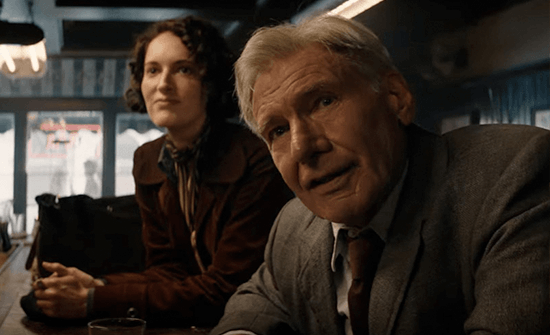
In a curious detail, 45 years had elapsed between 1936, the setting of Raiders of the Lost Ark, and the film’s release in 1981; whereas a comparable 42 years separate the original film from Dial of Destiny. The differences between 1930s serials and 1980s blockbusters are vast; likewise, the gulf between late 1980s cinema and blockbusters today represents a colossal divide. So, from the outset, Dial of Destiny feels like it takes place in another universe than the film that started the franchise. Time will do that, as will a change in the means of production and distribution. No wonder the first images don’t feel like a 1980s Indiana Jones adventure. They usually open with a visual gag that fades the mountainous Paramount Pictures logo into a diegetic equivalent (everything from a mountain to a prairie dog mound). But since the Walt Disney Corporation took control of Lucasfilm in 2012, there’s no sense in Disney keeping with tradition when it pulls the focus off of its logo. Even though the first frames don’t resemble those of earlier installments, it’s easy to be thankful that the filmmakers didn’t transition from the Magic Kingdom logo to a castle in the story.
Though, that wouldn’t have been out of the question: The first scenes find Indy infiltrating a band of Nazis who are looting a castle in 1944. Along with his colleague, the bookish academic Basil Shaw (Toby Jones), our hero searches for an artifact to prevent its destruction and “save history”—a recurring theme and metatextual prompt for the filmmakers. The dark, ugly opener features a de-aged Ford, looking about forty, fighting Nazis through an unconvincing digital mask. The trick, for me, wasn’t effective at all. However, the propulsive narrative keeps us invested until the story picks up in 1969, and Ford looks like a human being again, not a video game character. That’s when Dial of Destiny begins to resemble a spy-thriller in the vein of Sydney Pollack’s Three Days of the Condor (1975), involving former Nazis, CIA agents, and a mysterious device. Days away from retirement and clashing with the culture’s obsession with everything new—the Moon landing, Beatlemania, etc.—Jones finds himself confronted by Shaw’s plucky daughter, Helena (Phoebe Waller-Bridge). She wants his help locating the Antikythera, the ancient dial her father obsessed over for most of his life. But Jürgen Voller (Mads Mikkelsen), a former Nazi enlisted by the US government as a rocket scientist, also wants the dial and sets loose his goons on Helena and Jones to recover it.
Spielberg’s talents made him the perfect director for Indiana Jones because he matched every adventurous set piece with a dazzling formal flourish. Part of what makes the earlier films so rewatchable is the sheer bravado on display. Sometimes that meant projecting large shadows on the wall, à la Michael Curtiz; sometimes, that meant maneuvering the camera into deliciously long and complicated shots. Whatever the method, there was an audaciousness to the camera that harmonized with the storytelling, giving the impression that Spielberg was a child playing in an elaborate cinematic sandbox. In Dial of Destiny, Mangold and cinematographer Phedon Papamichael are less interested in the breathless sequences and luminescent iconography that characterize Spielberg’s contributions; yet, the action here proves entertaining and functional. Even if Mangold and Papamichael’s work can’t compare with the visuals Spielberg made alongside Douglas Slocombe and Janusz Kamiński, their approach aligns with the film’s less sensationalistic narrative.
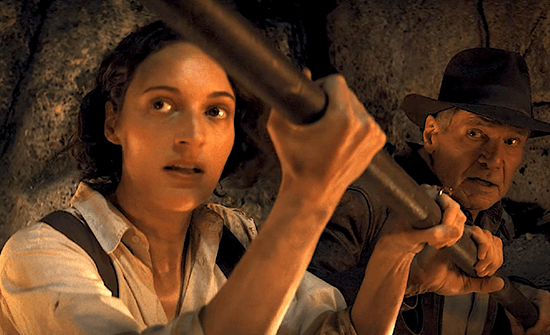
Usually, the MacGuffin drives the narrative in Indiana Jones films, and that’s true with Dial of Destiny. The dial also helps conclude the series by deepening its hero and putting more at stake for him personally. The 80-year-old Indy doesn’t take this intrepid mission out of archeological responsibility or even “fortune and glory.” He’s tired and broken down, full of aches and pains, and his personal relationships have been shattered since Kingdom of the Crystal Skull. The past is a heavy burden for Indy, leaving him cynical and resigned to give up—a sad state that the audience has never seen him in before. Aged and downtrodden, the character may not drive eye-popping sequences—he’s unwillingly roped into the proceedings—but the script gives Ford a chance to bring dimension to the role he created. If Indy’s complex relationship with his father in The Last Crusade represented the emotional core of the franchise so far, his relationship with Helena as a godfather and mentor is an equally complicated one—though, she’s also his competitor and foil. She’s a reflection of Indy in many ways, complete with her own boyish equivalent to Short Round in her Cairo compatriot, Teddy (Ethann Isidore). But she’s far more independent and less interested in romanticizing family ties.
The welcome additions of Waller-Bridge and Mikkelsen lead to some alternately charming and shocking developments—Voller’s schemes are particularly insidious—while the titular MacGuffin gives way to a wholly unexpected climax. Along the way, Indy globe-trots to various locations, trying to undercut Voller and even Helena. The script’s inclusion of Voller’s trigger-happy goon, Klaber (Boyd Holbrook), heightens the tension. Running 154 minutes, it’s the longest Indiana Jones film by far; yet, the momentum never wavers, though it doesn’t play as effervescently as previous entries. That’s somehow appropriate, given its themes. Dial of Destiny is about Indy taking stock of his relationship with history—his academic view of history, his family, and his adventures—and deciding which among them is most important. The Antikythera even gives him a chance to choose. It’s familiar territory for Mangold, who gave Hugh Jackman’s Wolverine a heartening send-off in 2017’s Logan, another franchise sequel that at once adheres to and breaks the mold with an inspired layering of an established character. Indeed, Dial of Destiny balances the MacGuffin with Indy’s more reflective character in this adventure, allowing for a powerfully emotional and thematic resonance by the end, regardless of how it deviates from its predecessors.
From a certain perspective, there are two ways to approach Indiana Jones and the Dial of Destiny. Either you watch with the expectation that it will harken back to the earlier movies, judging based on how well its story beats and visual schema adhere to the Indiana Jones formula. Or you watch and receive the film as presented, judging by its own merits. Those expecting the final Indiana Jones adventure to recapture the earlier magic may feel sore that it doesn’t. But how can anyone expect that without Steven Spielberg at the helm or given how much time has passed? Though Mangold is no Spielberg, he’s confident enough to try something new and skilled enough to pull it off. He adjusts to meet the demands of the sharply written material, delivering a moving conclusion to the franchise. Granted, the movie feels like it takes place in another universe far removed from Temple of Doom or even Kingdom of the Crystal Skull. And when it was over, there weren’t one or two sequences that were mindblowing per se. But Dial of Destiny also moved me with how it says goodbye to our beloved hero. All I know is that somewhere between the ungainly beginning and the conclusion that brought me to tears, Dial of Destiny won me over for how it builds upon the franchise and adds dimension to Indiana Jones.
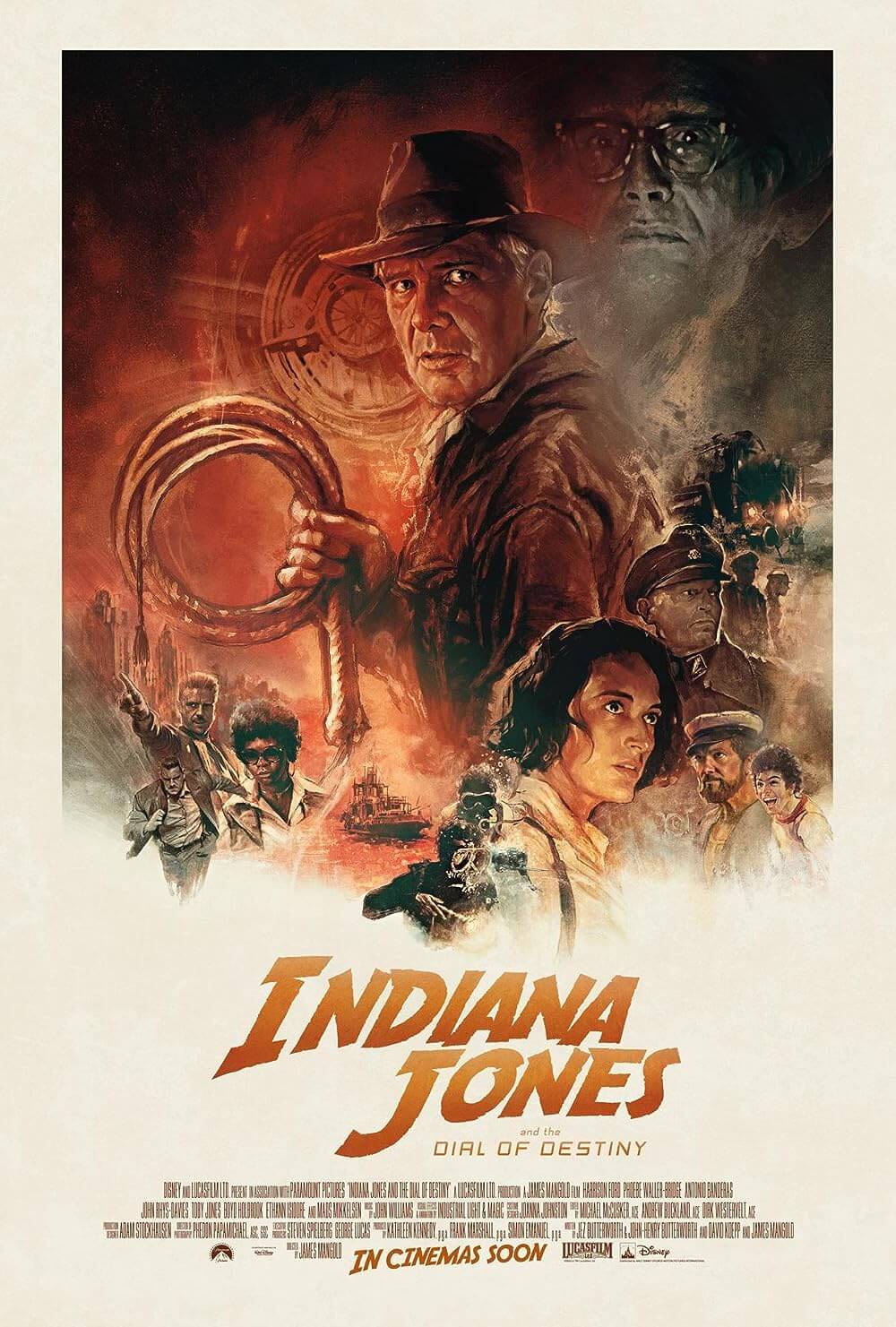
Thank You for Supporting Independent Film Criticism
Thank you for visiting Deep Focus Review. If the work on DFR has added something meaningful to your movie watching—whether it’s context, insight, or an introduction to a new movie—please consider supporting it. Your contribution helps keep this site running independently.
There are many ways to help: a one-time donation, joining DFR’s Patreon for access to exclusive writing, or showing your support in other ways. However you choose to support the site, please know that it’s appreciated.
Thank you for reading, and for making this work possible.
Brian Eggert | Critic, Founder
Deep Focus Review


